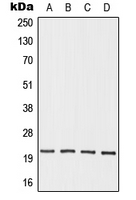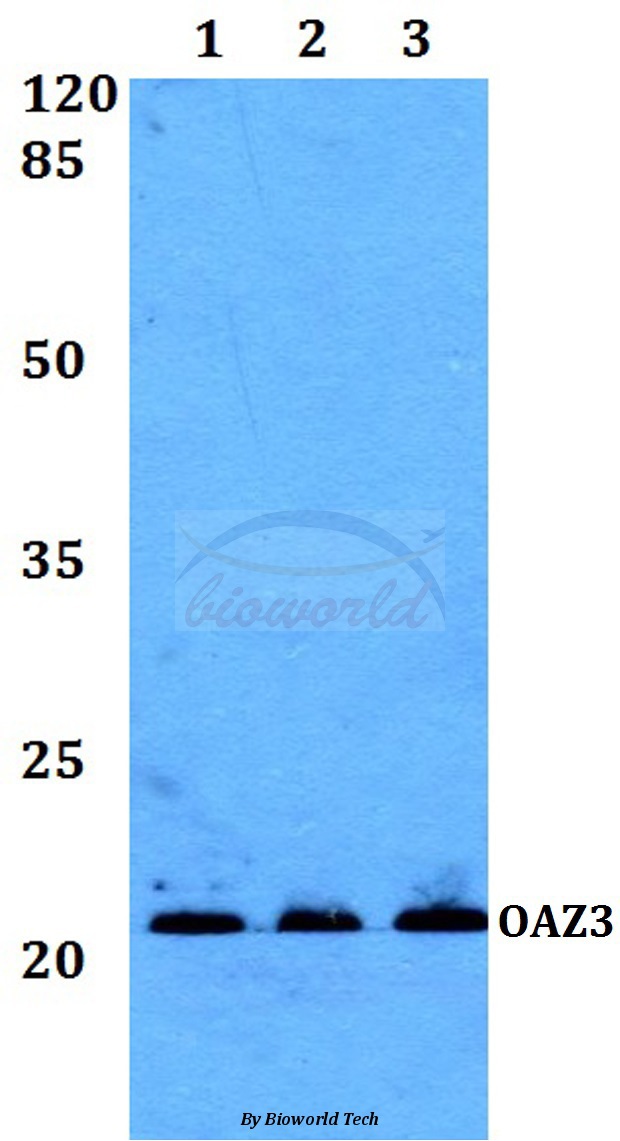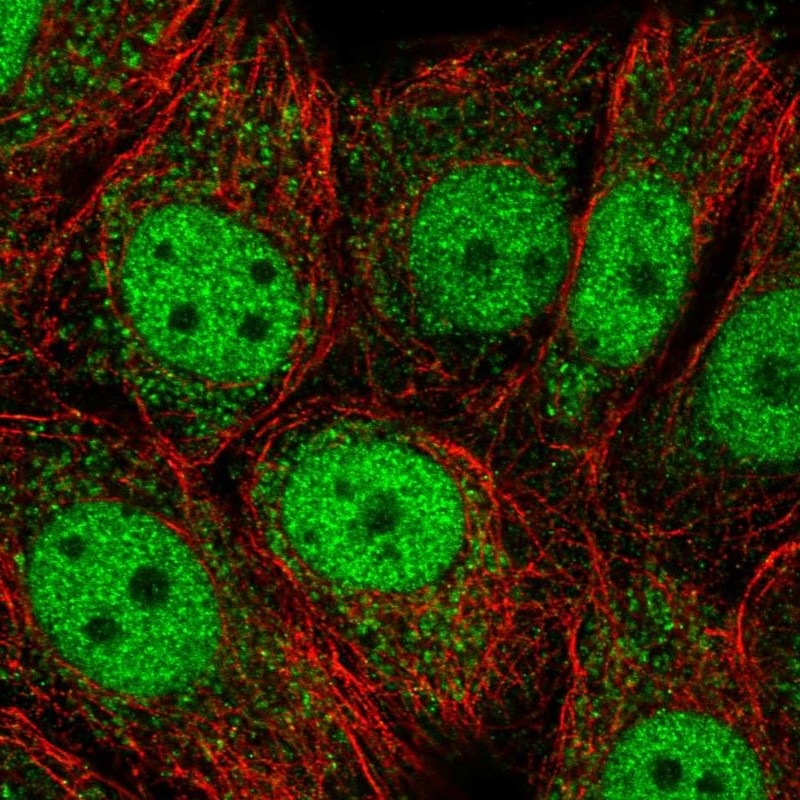
WB analysis of HEK293T (A), Jurkat (B), mouse testis (C), rat testis (D) whole cell lysates using GTX55956 OAZ3 antibody.
OAZ3 antibody
GTX55956
ApplicationsWestern Blot
Product group Antibodies
TargetOAZ3
Overview
- SupplierGeneTex
- Product NameOAZ3 antibody
- Delivery Days Customer9
- Application Supplier NoteWB: 1:500 - 1:1000. *Optimal dilutions/concentrations should be determined by the researcher.Not tested in other applications.
- ApplicationsWestern Blot
- CertificationResearch Use Only
- ClonalityPolyclonal
- ConjugateUnconjugated
- Gene ID51686
- Target nameOAZ3
- Target descriptionornithine decarboxylase antizyme 3
- Target synonymsAZ3, OAZ-t, TISP15, ornithine decarboxylase antizyme 3, ODC-Az 3, antizyme 3, testicular secretory protein Li 31
- HostRabbit
- IsotypeIgG
- Protein IDQ9UMX2
- Protein NameOrnithine decarboxylase antizyme 3
- Scientific DescriptionThe protein encoded by this gene belongs to the ornithine decarboxylase antizyme family, which plays a role in cell growth and proliferation by regulating intracellular polyamine levels. Expression of antizymes requires +1 ribosomal frameshifting, which is enhanced by high levels of polyamines. Antizymes in turn bind to and inhibit ornithine decarboxylase (ODC), the key enzyme in polyamine biosynthesis; thus, completing the auto-regulatory circuit. This gene encodes antizyme 3, the third member of the antizyme family. Like antizymes 1 and 2, antizyme 3 inhibits ODC activity and polyamine uptake; however, it does not stimulate ODC degradation. Also, while antizymes 1 and 2 have broad tissue distribution, expression of antizyme 3 is restricted to haploid germ cells in testis, suggesting a distinct role for this antizyme in spermiogenesis. Antizyme 3 gene knockout studies showed that homozygous mutant male mice were infertile, and indicated the likely role of this antizyme in the formation of a rigid connection between the sperm head and tail during spermatogenesis. Alternatively spliced transcript variants encoding different isoforms, including one resulting from the use of non-AUG (CUG) translation initiation codon, have been found for this gene. [provided by RefSeq, Dec 2014]
- Storage Instruction-20°C or -80°C,2°C to 8°C
- UNSPSC12352203




